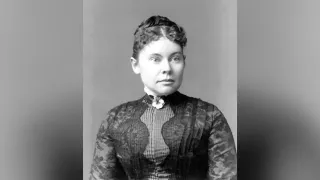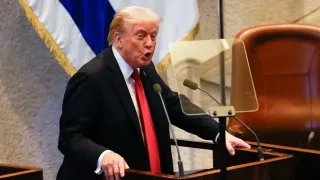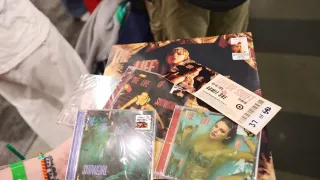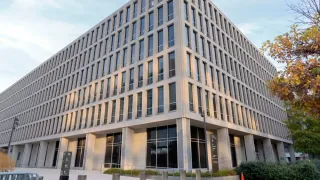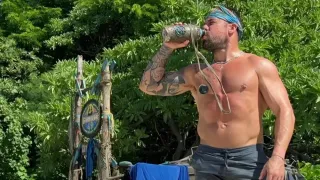October 18, 2024
During WNBA Season, Bars and Restaurants Say They Saw Greater Customer Demand for Women's Sports
Andrew Seligman READ TIME: 4 MIN.
Josh Pehlke remembers having to beg and plead at bars and restaurants to get them to show WNBA games just a few years ago. Too often, the answer was a flat-out no.
These days, he doesn't have to worry as much.
As the general manager at Signature Bar & Restaurant in Chicago's South Loop neighborhood, about a 3-point shot from the Chicago Sky's home at Wintrust Arena, he has some say. But even when he's not at work, he has noticed a difference.
"I've been to Cubs games this season and gone into sports bars in Wrigleyville and found the WNBA on TV, whereas two or three years ago, that wasn't happening," Pehlke said.
The WNBA drew sellout crowds and unprecedented ratings in a transformational season that's winding down with a finals matchup between the New York Liberty, seeking their first title, and the Minnesota Lynx going for their record fifth. The best-of-five series opened Thursday with Minnesota rallying to beat New York in overtime.
Whether it was Indiana's Caitlin Clark and Chicago's Angel Reese taking their captivating rivalry from college to the pros, Simone Biles capturing more gold at the Olympics or 92,003 fans packing Nebraska's football stadium for a volleyball game, women's sports in general are drawing more eyeballs.
Sports bars and restaurants are taking note, adjusting their marketing and menus in order to attract a wider range of customers. At least some say they're seeing an increased demand for women's sports on their TVs, though the evidence is more anecdotal than statistical. A handful catering specifically to women's sports have opened in recent years, such as The Sports Bra in Portland, Oregon.
Either way, fans have options if they want to grab a bite and a drink and watch a game away from home.
"You'll see small groups of women coming out to watch the actual sports," Bar Louie CEO Brian Wright said. "And you see a lot of men requesting women's sports now. So it's kind of an entire paradigm shift of how women's sports are being viewed. You very seldom saw a group of men coming in saying, 'Can you put on that WNBA game?' Now, that's really becoming commonplace."
Bar Louie has restaurants in 21 states from coast to coast and as many as 20 TVs per location. As for how many are tuned to each specific sport, Wright said there's no real science in determining that. But he is sure of a few things.
The chain is attracting a greater percentage of female customers. And when Clark or Reese were playing, that was good for business. Their NCAA Tournament games the past two years, for example, created about a 10% bump in business.
At Twin Peaks, where most locations have 16 satellites and 75 TVs, the clientele skews about 80% male, CEO Joe Hummel said. But the gender gap is narrowing.
"Five years ago we might not have advertised or pushed women's March Madness," Hummel said.
The company evaluates the schedule every day to determine how many TVs will be tuned to each game. The restaurants can adjust based on news and customer demand, which is key. Hummel said Twin Peaks does not track how many TVs are tuned to specific events or customers requesting to sit where they can see a particular game.
"It'd be very difficult," he said. "Our operators have a lot of communication back and forth with the guest and if we inundated our operators -- you have to track this, this and this all the time -- they would end up worrying about the stats and not even taking care of the guests."
Nicole Bond, associate director of marketing strategy at Mintel Comperemedia, said research shows 71% of consumers believe women's sports will continue to grow in popularity. She sees it up close in her side job as a bartender at Bernie's Tap & Grill near Wrigley Field in Chicago.
"Men are leaning into women's athletics," said Bond, a former Northwestern softball player. "And I hear the conversations that you hear them having about what's happening in the W, or what's happening in the NWSL or whatever it is. It's become really interesting and like a norm in bar conversations. I think people are wanting to watch those games and groups just like you do when you bring people in for Game 7 of the Stanley Cup."
Pehlke became a WNBA fan about a decade ago and started following the Sky when they added Chicago-area product Candace Parker prior to the 2021 championship season. He grew up a Los Angeles Lakers fan in northern Wisconsin.
Pehlke, whose friend has season tickets, is a regular at Wintrust Arena for Sky games. He even collects WNBA trading cards.
Signature, which is owned by former Bears defensive lineman Israel Idonije, opened in January. There are 13 TVs on the walls, with 10 tuned to the WNBA on a Friday night near the end of the regular season. Six were showing the Sky's game at Minnesota.
During the playoffs, Pehlke said, the restaurant saw more requests for TVs to be tuned to the WNBA. He was expecting an uptick in business, too.
"Demand has been outstanding this entire playoffs," he said. "I was very happy to see that it wasn't just for the Fever games, but seemingly for all of the games."
